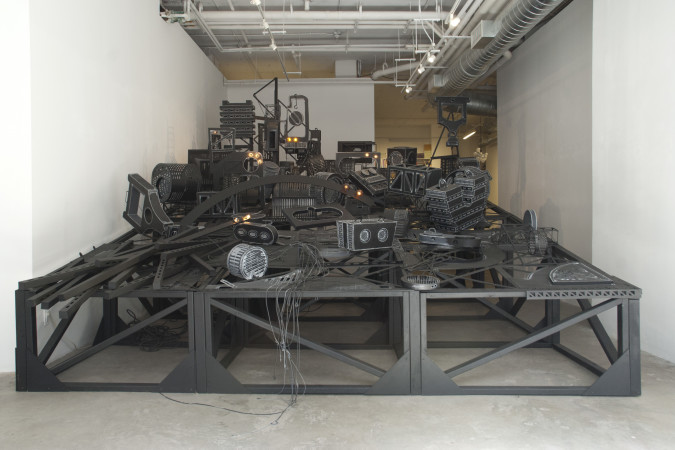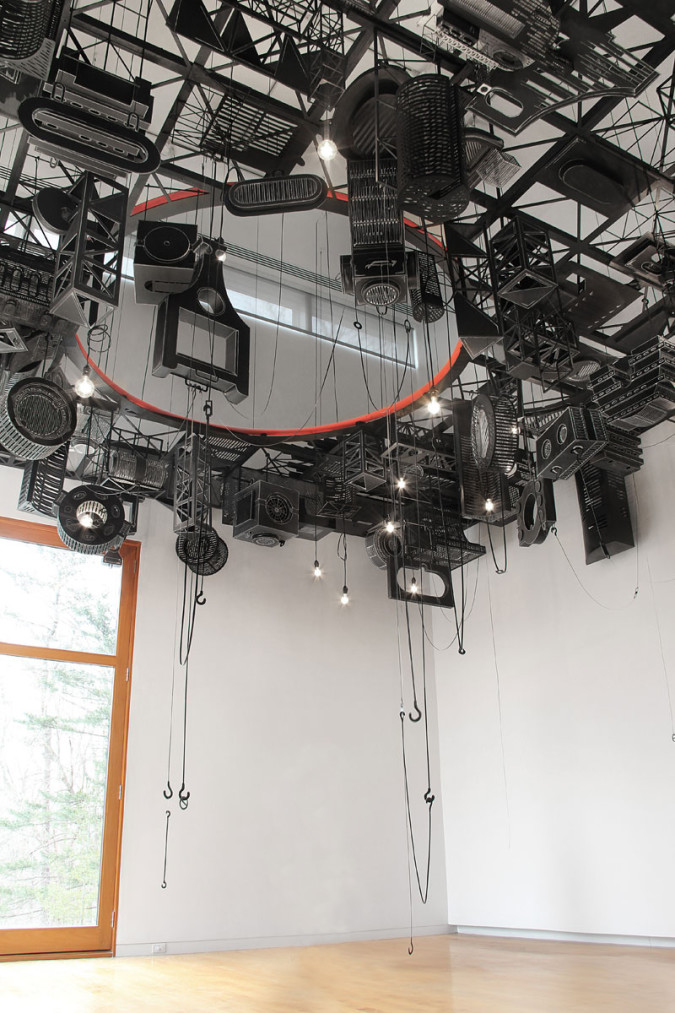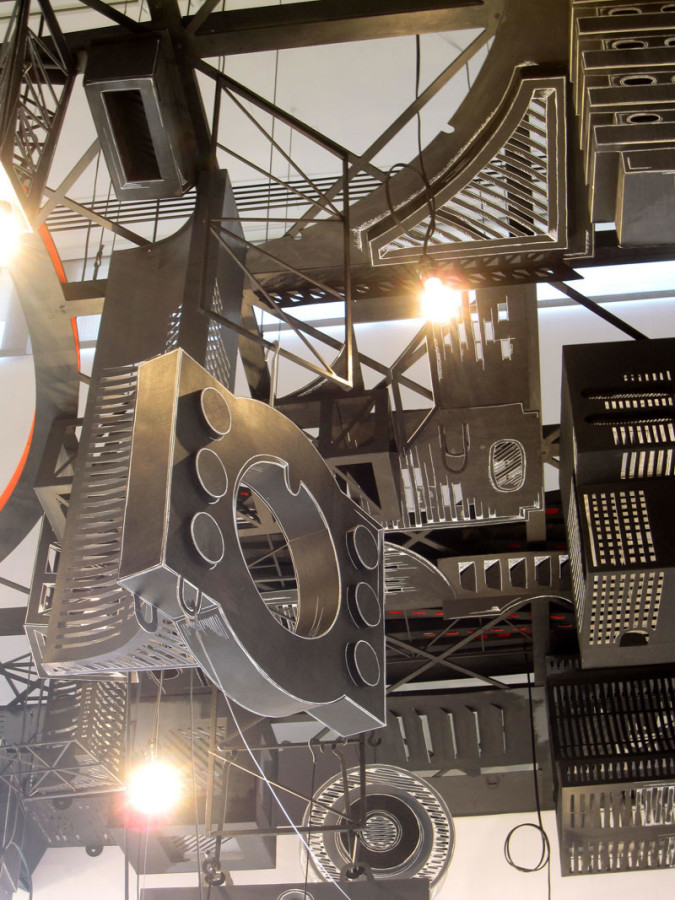Jane South

Raked, 2014
Site Specific Installation at Spencer Brownstone Gallery, New York
Hand-cut paper, ink, acrylic; structure of wood, MDF, cable; electrical cords, bulbs, hardware, 9.5′ x 12.5′ x 16.5’
Image courtesy of the artist and Spencer Brownstone Gallery, NYC
Born in Manchester, England, Jane South worked in experimental theater before moving to the United States. Site-specific installations include the Aldrich Museum of Contemporary Art, CT, Mass MoCA, MA, Nassauischer Kunstverein Wiesbaden, Germany, the Knoxville Museum of Art, TN, and White Columns, NY. Solo exhibitions include the Queens Museum, NY, the Weatherspoon Art Museum, Greensboro, NC, Spencer Brownstone Gallery, NY and Susanne Vielmetter Los Angeles Projects.
Question:
Your installations create the feeling of being behind the scenes of a high-production play, as if glimpsing the machinery behind the spectacle. Are the individual forms in your work designed to mimic specific equipment, or are they largely culled from a combination of memory and imagination? Are they intended to be specifically recognizable, or is the work more freely associative, like a strain of magical realism?
Answer:
The time I spent working in experimental theater has long informed my work so your “behind the scenes” reference is spot on. I think it has filtered in as way to ponder experiences that occur in liminal spaces where different realities brush up against/slip into one another.
In terms of material, working in the theater also taught me to use cheap, every day materials and transform them into any number of illusionistic scenarios. In my current work I use these same ubiquitous materials, but the initial disguise is deliberately revealed when the piece, at first appearing to be made from metal and by machine, is seen close-up and the dissemblance is exposed. In this sense, I hope that the mechanics and implications of the “theatrical flimsiness” is made more potent by having been revealed as such. A key component from the theater that has informed my work is this idea of façade, the “fancy front” supported by a hidden utilitarian back, the notion of an illusionistic world that is literally created out of “flats,” as the free-standing components of a theater set are called. This contrary idea of a two-faced jigsaw coming together to create a constructed 3-dimensional environment is at the root of my interest in the relationship between two and three dimensions. My aim, however, is to invert this separateness and fuse these contradictions together to make works that are simultaneously 2-D, 3-D, back, front, illusionistic, utilitarian, disguised, and revealed.

Floor/Ceiling, 2013
Site Specific Installation at the Aldrich Contemporary Art Museum, CT
Hand-cut paper, ink, acrylic; structure of wood, MDF, cable; electrical cords, bulbs, hardware, 24′ x 22′ x 22′ images courtesy of the artist and Spencer Brownstone Gallery, NYC
As to the individual forms, the components allude to various objects but are not designed to mimic them. They are abstracted to assert a separateness from any nameable object, to act as things without specific referents. This opens up a space with which the experience of the viewer can connect. The forms emerge through making, I don’t really know what any one component will be before beginning to construct it so I am often surprised! I spend a lot of time looking at infrastructure, architectural, theatrical, industrial. This imagery gets mashed up and distorted over time and emerges as forms that are perhaps hybrids of all of the above.
I like the magic realism reference in relation to how magic realism operates a means of disturbing “reality”. However, with magic realism it is usually the fantastical that disturbs and I am not interested in a fantastical tone. I’m more after something that is “hidden in plain sight”; that appears familiar at first view and then unfolds with a certain strangeness–that undercuts any initially apparent “known-ness”. I’d like the installations to deliver a series of experiences over time that contradict, complicate and disrupt the temperature of the first encounter, that feel like mash-ups of scale, space, line, volume, opacity, transparency, construction, and demolition. I want to make sculptural installations that are phenomenologically disorienting, thrilling, and vertiginous in their re-ordering of the familiar, that reveal a series of unsettling absurdities.
To quote George Steiner, I aim to make work that “breaks into the small house of our cautionary being” and so renders it “no longer habitable in quite the same way as it was before.”






